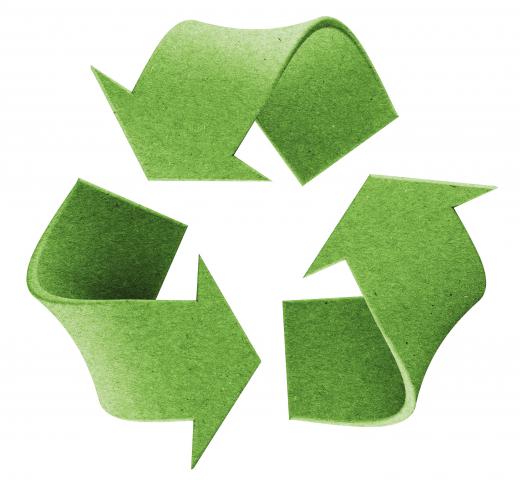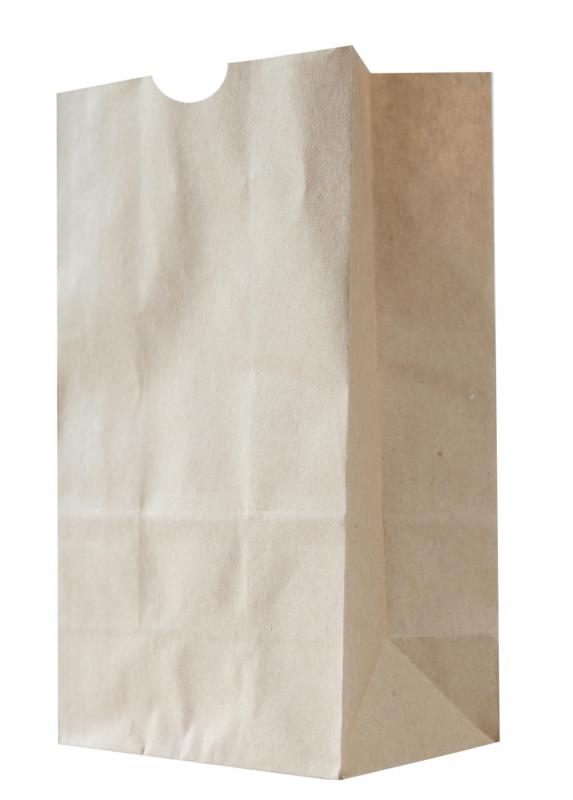At AllThingsNature, we're committed to delivering accurate, trustworthy information. Our expert-authored content is rigorously fact-checked and sourced from credible authorities. Discover how we uphold the highest standards in providing you with reliable knowledge.
What Is the Connection between Recycling and Conservation?
Just like the name suggests, conservation refers to purposeful efforts toward the judicious management of the natural resources on earth, with the aim of preserving them as well as battling the side effects of previous mismanagement. The relationship between recycling and conservation stems from the fact that recycling is one of the many systems utilized in the conservation of natural resources. Targets for conservation efforts are varied, including areas like rainforests, land and water.
An application of the link between recycling and conservation is in the conservation efforts aimed at preserving the rainforest in particular and trees in general. The rainforest is an area of the earth with the most diverse mixture of species per square mile. A rainforest is so densely packed with various species that new species are continually being discovered. An important role of the rainforest in relation to the planet as a whole is the fact that the abundant wealth of trees and plants serve as an important source of oxygen for the planet and an equally important source for the absorption of carbon monoxide from the planet. Aside from this, the trees and plants are also important sources of food and medicine as well.

The gradual and continued destruction of the rainforest is a result of the burning of areas in the forest for agricultural purposes, the cutting of trees for timber and other wood-related products, and the clearing of land to make way for the establishment of factories. Trees in the rainforest are destroyed far more often than new trees are planted to replace them, leading to a sustained loss of the rainforest in yearly increments. The relationship between recycling and conservation can be seen in the manner in which concerned people all over the world try to manage the resources from trees by recycling tree-based products. This includes items like paper, wood and related products. Such efforts substantially reduce the need to cut new trees to make these products, since the products can be made by recycling previous products that have been discarded.

Another link between recycling and conservation can be seen in the area of water conservation, which is aimed at protecting the natural water resources of the planet. The same applies to the conservation efforts directed at the proper management of agricultural land through the practice of proper agricultural methods meant to make the land as productive as possible without depleting the nutrients in the soil. This is especially important as it reduces the need for the destruction of trees in order to make room for new and fertile agricultural land.
Frequently Asked Questions
How does recycling benefit wildlife conservation?

Recycling reduces the need to extract raw materials, thereby preserving natural habitats that are crucial for wildlife. According to the World Wildlife Fund, habitat loss is one of the biggest threats to biodiversity. By recycling, we minimize deforestation, pollution, and disruption to ecosystems, which directly benefits the animals that depend on these habitats for survival.
What is the impact of recycling on water conservation?

Recycling plays a significant role in water conservation. The production of new products from raw materials often requires a large amount of water. For instance, recycling one ton of paper can save approximately 7,000 gallons of water, as reported by the U.S. Environmental Protection Agency. This conservation of water resources is critical for maintaining aquatic ecosystems and the species that inhabit them.
Can recycling help in reducing carbon emissions?

Yes, recycling can substantially reduce carbon emissions. The process of recycling materials typically consumes less energy compared to producing goods from virgin materials. The Environmental Protection Agency states that recycling of materials like aluminum cans, plastic, and paper can save up to 95%, 70%, and 60% energy respectively, thereby reducing the carbon footprint associated with manufacturing.
How does recycling reduce the strain on landfills and what does this mean for conservation?
Recycling diverts waste from landfills, reducing the need for new landfill sites, which can encroach on natural habitats. The Natural Resources Defense Council highlights that landfills can lead to soil and water contamination, harming local ecosystems. By recycling, we limit these environmental impacts, helping to conserve the land and the species that inhabit it.
What role does recycling play in preserving natural resources?
Recycling conserves natural resources by reusing materials that would otherwise require new resources to be extracted. For example, recycling metals like aluminum and steel means there's less demand for mining, which can lead to deforestation and habitat destruction. The World Economic Forum notes that recycling can provide a majority of the raw materials needed by industry, significantly reducing the pressure on natural resources.
Is there a connection between recycling and energy conservation?
Recycling is intrinsically linked to energy conservation. The process of extracting, transporting, and processing raw materials is energy-intensive. By recycling, we reduce the energy demand of production. The Energy Information Administration has reported that using recycled materials can result in energy savings of up to 30% for some materials, which translates to less fossil fuel consumption and lower greenhouse gas emissions.
AS FEATURED ON:
AS FEATURED ON:















Discuss this Article
Post your comments